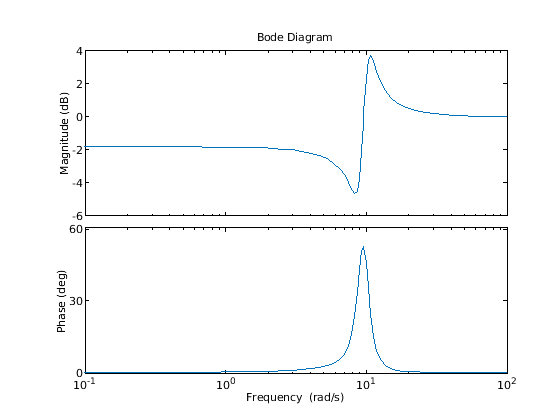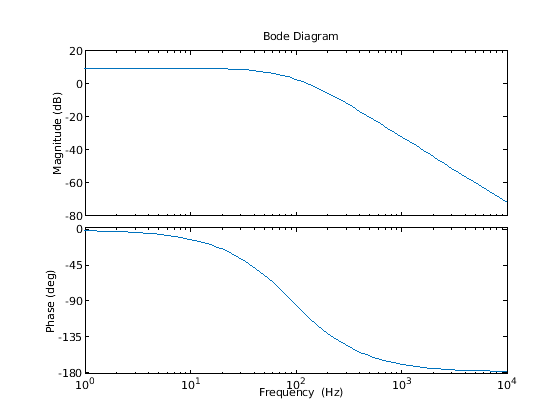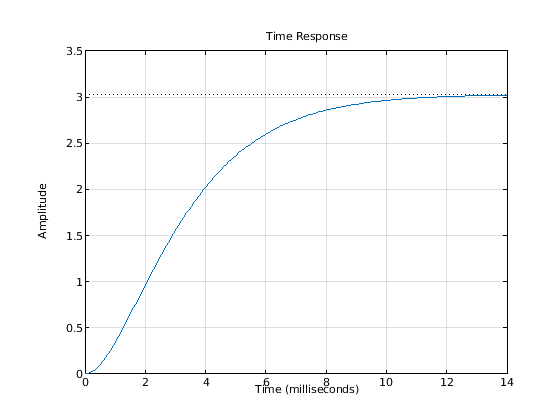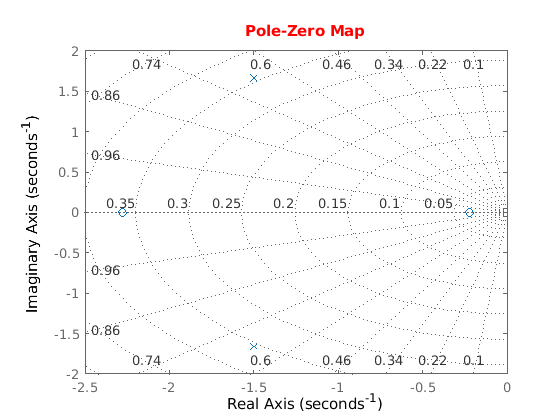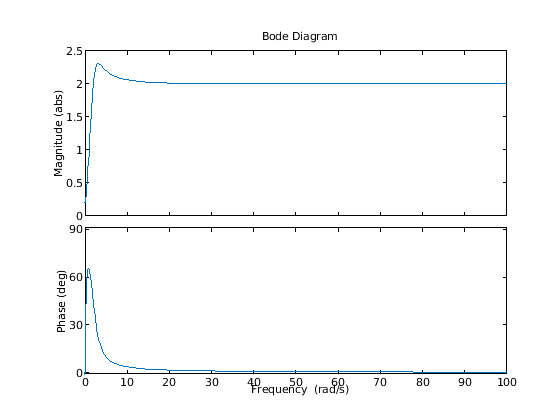Eingabemöglichkeiten für Übertragungsfunktionen
Eingabe: Pole und Nullstellen
poles = [-1+10j,-1-10j];
zeroes = [-1-9j,-1+9j];
z = poly(zeroes);
p = poly(poles);
Hs1 = tf(z,p);
pzmap(Hs1,'b')
x = bodeoptions;
x.XLim = [0.1 100];
figure(1)
bode(Hs1,x)
man sieht: die Nullstelle neutralisiert die nahe Polstelle, der zusätzliche Pol überwiegt, bei w=3 ist die Phase -45°; dann aber kommt man in einen Frequenzbereich, in dem zuerst die Nulllstelle, dann der Pol eine kleine Abweichung erzeugen; ist der Abstand von diesen beiden Punkten groß genug, wirkt wieder nur der eine Pol und dreht die Phase auf -90*
Eingabe: Übertragungsfunktion in s
PT2 Glied
s=tf("s");
G3=(1e6)/((s+550)*(s+600));
g=bodeoptions;
%g.MagUnits = 'abs';
%g.FreqScale='linear';
g.FreqUnits='Hz';
bodeplot(G3,g);
p=timeoptions;
p.TimeUnits = 'milliseconds';
stepplot(G3,p)
grid on
Eingabe: Polynome
sys = tf([2 5 1],[1 3 5]);
h = pzplot(sys);
grid on
p = getoptions(h);
p.FreqUnits = 'Hz';
p.Title.Color = [1,0,0];
setoptions(h,p);
g=bodeoptions;
g.MagUnits = 'abs';
g.FreqScale='linear';
q.FreqUnits='Hz';
bodeplot(sys,g);
stepplot(sys)










